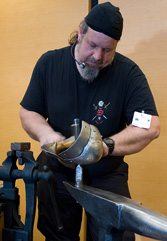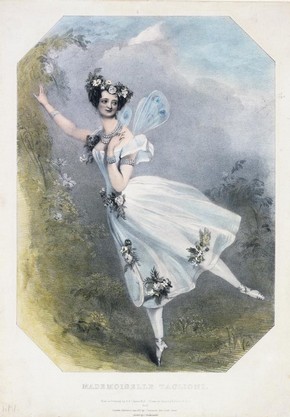Graeme Murphy's retelling of the Swan Lake story takes a huge leap to a modern era where there there is an Odette but no Odile, no sorcerer Count Rothbart, but a married Countess Rothbart who is still in love with the Prince now to be married to Odette. Where the traditional classical ballet tells of a young prince in search of his perfect ideal love, the young 20th century prince appears first as an emotionally-detached and somewhat caddish and flawed man in the process of being married to a beautiful young woman while apparently still very much involved with his older married lover (Countess Rothbart). This ballet, commissioned in 2002 and has been performed for 12 years now, although for the first time in Los Angeles in only the second time Australian Ballet has performed in Chandler Pavillion in 50 years. It is inspired unabashedly by the love triangle Princess Diana was in and whose marriage was famously self-described about being a little crowded with three people in it. But there is no need to think of Princess Diana and the love triangle she was in when you see this modern-era Swan Lake Ballet, as you will fully empathize with the new bride who discovers in her wedding celebration that her new husband and his lover are still very much together. The first act is full of pas de trois sequences where the Prince is besieged by the attentions of both women, but the young fragile bride is so overcome with sadness and jealousy and a sense of doom in this marriage. She becomes emotionally erratic as she makes inappropriate overtures to nearly all the male guests (when she feels rejected by the Prince) and pushes together the lovers in public acknowledgment of their ongoing affair, horrifying everyone. The first act ends explosively with Odette, with her fouettes and multiple leaps symbolically representing her falling into a psychosis, before being whisked away to the sanatorium, after attempting to throw herself into the lake.
The second act begins quietly with Odette still in her psychosis mode at the window overlooking a lake cared for by nuns in their anonymously huge nun hats. As Odette dreams of being free as a white dancing swan with a bevy of swan companions, the otherworldly scenes from the tilted lake begins and where the beautifully choreographed sequences performed by the corps de ballet, including the classic cygnet dance, most resemble the classical ballet performances even though these corps de ballet sequences are also innovatively different in its various formations.
There is no evil sorcerer in Graeme Murphy's production and the sole evil character is the Countess Rothbart who, in the third act in an black gown evening ball, is upstaged by a beautiful confident recovered Odette in her white dress as she re-enters the social scene and, this time, the Prince becomes obviously enamored by a nonchalant Odette. There are no triumphant 32 fouettes here by the black clad Countess who realizes she is really losing the Prince now to Odette and desperately calls the sanatorium staff to come and re-commit Odette. Escaping the nuns and doctors, Odette runs away, and next appears in the final act by the lake again. Odette and all the swan companions are black swans and the Prince follows her. They dance the final pas de deux which starts with an explosive grand jete leap and she is caught by the prince into a sustained lift. Foregoing the famous dying swan sequences, the ballet ends with Odette vanishing dramatically into the tilted lake.
Comparisons to classic performances to the various versions of Swan Lake by different ballet companies are inevitable by purists who will be upset by the loss of critical elements such as the black swan character, Odile, and the re-arranging of the music to fit the new choreography. Only the Hungarian national dance remains as part of the wedding celebration in this reimagining of Swan Lake in the modern setting. The costuming and staging of Graeme Murphy's Swan Lake is spectacular and his choreography is truly exciting with far more explosive leaps and dramatic lifts and more different partnering techniques than I have seen in other ballets. Like Matthew Bourne's re-imagining of Sleeping Beauty, Graeme Murphy's Swan Lake has become our new favorite and Australian Ballet company dancers are lucky to be able to dance this very different Swan Lake. Australian Ballet is clearly a first rate ballet company that tours extensively and has a strong core of physically-talented and emotionally-expressive principal dancers, soloists, and corps de ballet dancers. Their Swan Lake will astound and delight you even if you are somewhat of a purist because this new choreography and story narrative is executed so well that is now a new classic that all ballet enthusiasts should see and include in their "ballet-viewing repertoire"!
Australian Ballet performs Swan Lake with a live orchestra at the Dorothy Chandler Pavillion in Los Angeles until Sunday, October 12, with a matinee on Saturday. There are two intermissions in this 4-Act ballet, but you would never realize how quickly time flies with this fast-paced and radically different Swan Lake ballet. Tickets are available at:
http://www.musiccenter.org/reserve/index.aspx?performanceNumber=2546
The full program is at: http://www.musiccenter.org/documents/2014-15/Swan-Lake/
and the final casting list is:
http://www.musiccenter.org/Documents/2014-15/Casting-Swan-Lake.pdf
To fully appreciate this ballet story line in its original classic form, and especially if you are bringing younger children to this ballet, here are two study guides with different levels of complexity and two slightly different story narratives.
http://www.bolshoi.ru/en/performances/36/libretto/
See some preview youtube clips here, including a good six minutes from various acts of the ballet, at:
http://calperformances.org/performances/2014-15/dance/australian-ballet-swan-lake.php?tab=3#TabbedPanels1
On World Ballet Day, we were fortunate to see the rehearsal for Swan Lake live-streamed and you can see segments of this from 20:30 minutes to 39:00 here:
https://www.youtube.com/watch?v=_Q49pGO08Ko
If you just want to listen to the beautiful Tchaikovsky score in 8 parts, without visual distractions, you can hear it here:
https://www.youtube.com/watch?v=S76CGGPqI3s&list=PL09942EDACAA2D4BB
To watch the Kirov (now Mariinski) Ballet's version of classical Swan Lake online, here is a full version of almost 2 hours where you can see the traditional choreography, including the various national dances and the dying swan. To see it live in Los Angeles, catch Los Angeles Ballet perform this ballet next at UCLA on October 17 and 19, which I will also review in this blog.
For a peek at Matthew Bourne's irreverent all-male Swan Lake choreography, see:
https://www.youtube.com/watch?v=CUqfdDEYFLQ
If you simply cannot come and watch any of the remaining performances by Australian Ballet, do rent or buy this version of Swan Lake at amazon.com for download or instant viewing:
http://www.amazon.com/Swan-Lake-The-Australian-Ballet/dp/B00GXQF5P0
The Music Center provided this press photo.
The Music Center provided this press photo.






